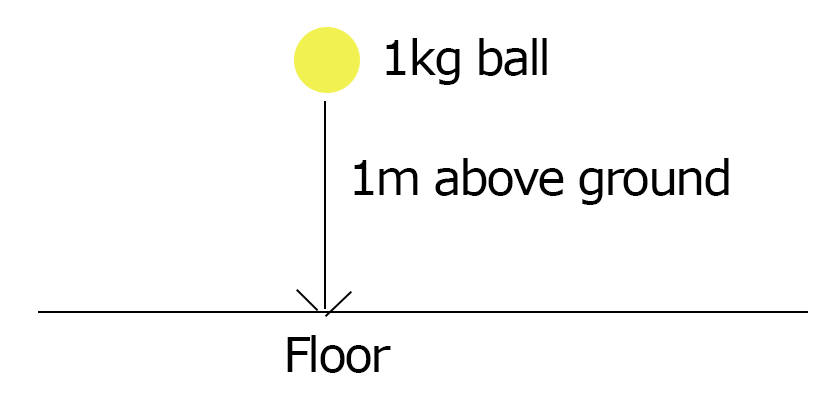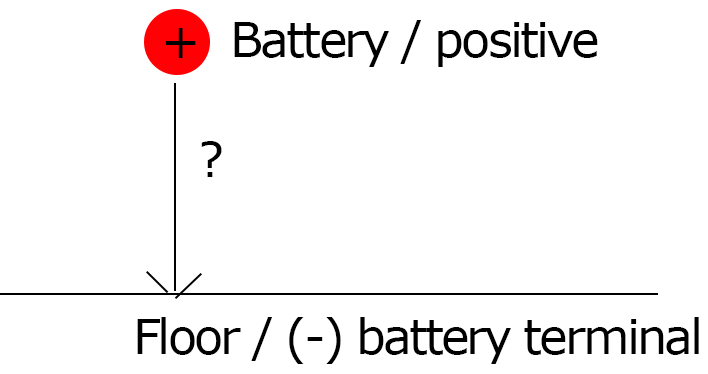To understand potential energy in mechanics it's easy to show something like this:
Here the potential energy of the object is 1kg * 1m * g.
Now to demonstrate this same thing with electrical potential energy, let's call the floor/ground 0V, and the positive terminal of a battery the ball.
Using the ball parallel, what would the + terminal of the battery be in the above picture -- would that be the ball? What about the "1m above ground" -- is there some similar conception in electricity? I would like to have a more intuitive understanding (such as a ball dropping).



h? $\endgroup$ein-vestand for (negative voltage, but e?) $\endgroup$